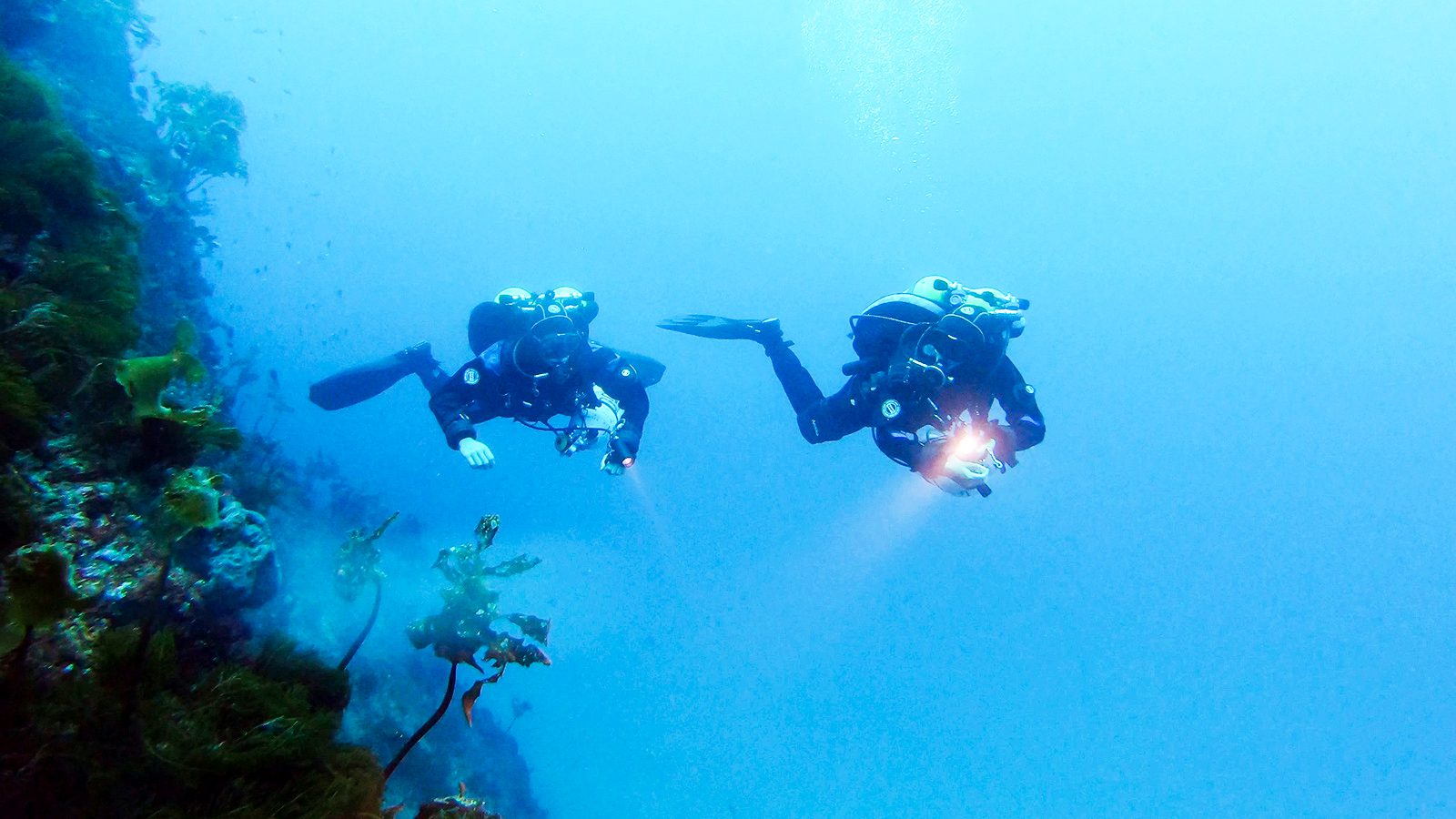
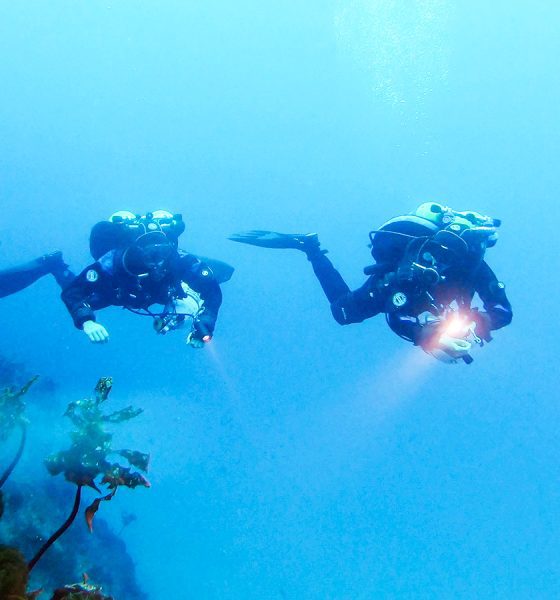
Education
Becoming a Technical Diver: My Dive into GUE’s Tech 1
NextGen Scholar Annika Andresen details her experience taking GUE’s Technical Diver 1, regarded as one of the agency’s most rigorous classes. If the failures don’t get you, your helium bill just might. Dive in.
Text and images by Annika Andresen.
🎶🎶 Pre-dive Clicklist: Ocean Drive by Duke Dumont
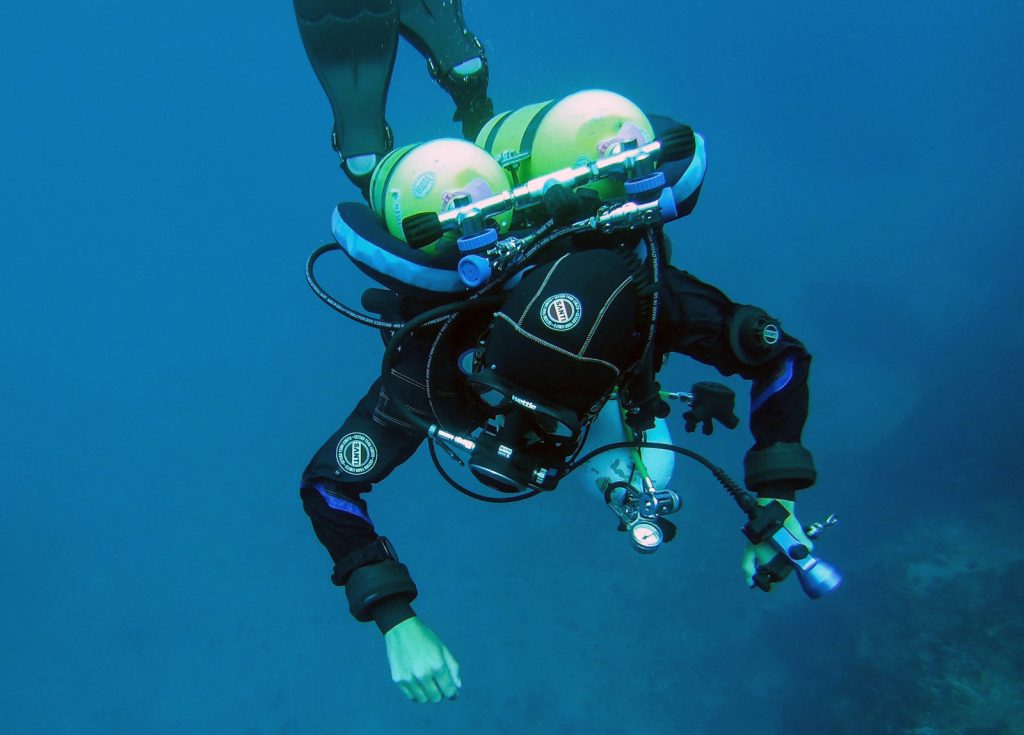
I never thought of myself as a technical diver, I just wanted to dive to explore and be underwater as much as I could. Then, at one point, I was diving and could see the reef or the wreck that extended beyond my limits as a diver. That’s when I knew I wanted to go explore farther and discover more. And I knew just what to do.
The purpose of the Global Underwater Explorers (GUE) Technical Diver 1, aka “Tech 1” course is to introduce a diver to the skills required for technical diving. It is designed to take you through a progression, gradually increasing the skill levels, beginning with simple manifold failures, and developing safe decompression gas handling, more complex failures, ascent protocols, and decompression management. Once completed, the diver is certified to use trimix to a maximum depth of 51 m/170 ft, and a maximum of 30 minutes of decompression.
Why Tech 1?
2015 was the first year I thought about the possibility of taking a technical diving course. I was diving the MV Rena, a container ship in New Zealand that ran aground on the Astrolabe Reef four years earlier. The wreck was split in two and the stern starts at 26 m/85 ft, continuing down the reef face to 70 m/230 ft. I remember so clearly sitting at my limit of 30 m/98 ft, thinking about what it would be like to explore the wreck properly. On that day, a little seed got planted. I needed to do some technical training so I would have the skills to extend my capability to dive this wreck.
I have been lucky enough to have known GUE Instructor Jamie Obern since I started working at Dive Tutukaka, and he was my instructor for my Fundamentals course in 2014. Since then, he has become my mentor and good friend, whose advice and support are always valued, especially when it came to encouraging me to apply for GUE’s NextGen Scholarship, intended to provide training, equipment, and travel funding to the next generation of divers. He continues to inspire me with his diving knowledge and the GUE community he has created here in New Zealand. When completing my NextGen scholarship application, one of the questions asks, “What course/s would you like to complete in your scholarship year?” This was an easy question to answer; immediately I wrote, “Tech 1.”

Valve Failures and Deco Procedures at Kai Iwi Lakes
After six years of thinking about doing Tech 1, it was finally happening. In June 2021, my teammate Josh and I loaded my Dad’s truck with six twins sets and four stages. We planned on having three days at Kai Iwi Lakes, a beautiful set of lakes in the far North of New Zealand. We arrived the night before, greeted by Jamie as we made ourselves at home before discussing how the week was going to run.
Josh and I are both open water instructors and often bounce between using singles and twins depending on the purpose of the dive and location. We went through all our gear thoroughly first, and Jamie closely inspected what we did or didn’t have. Once we were happy with our gear, we got our first introduction to valve failures. Jamie started tapping on our tank to indicate a failure while we talked through what we were doing. Starting with fixable failures, we ran through the drills until we could do it smoothly with just hand signals. We then set off for our first dive.
Kai Iwi Lakes is a perfect training ground for divers. As you enter the crystal clear water, the slope immediately drops away, reaching 10 m/33 ft without having to swim very far, then gradually slopes deeper. The bottom is covered in heavy sediment that can limit visibility, if disturbed, but settles quickly.
We started our descent by laying a line using a primary reel while being very aware of Jamie’s position, expecting a failure to happen at any time. He always chose the perfect moment; just as we started to relax into the dive, we would hear a rush of bubbles coming from our manifold. Josh and I took turns comfortably fixing each problem that arose, progressing to multiple problems at the same time. Over the three days at Kai Iwi Lakes, we gradually advanced to more complex failures and became more comfortable with the additional, unfamiliar gear.
My most memorable moment was on day two when I had an unfixable valve failure, Josh had lost his mask, then was out of gas trying to get Josh’s regulator so he could switch on to his necklace while having no vision and with both of us getting tangled in our line while Jamie dropped handfuls of sediment on top of us. It ended with all of us at the surface dealing with the problems Jamie gave us in fits of laughter. This was a moment of clarity when I realized that I was ready for this course. On the third day, although only 10 m/33 ft deeper, I found myself making mistakes on drills, which reflected both the increase in depth and tiredness from the previous big days.
In the evenings, Jamie would run presentations step-by-step. Math has never been my strong point, so the calculations turned into a game of my calculator versus Jamie’s brain. Most of the time Jamie won, and we eventually got there. Following the three days at Kai Iwi Lakes, we had a day off in Tutukaka before heading out on the boats for our final day of drills, practicing ascents, and deco procedures.
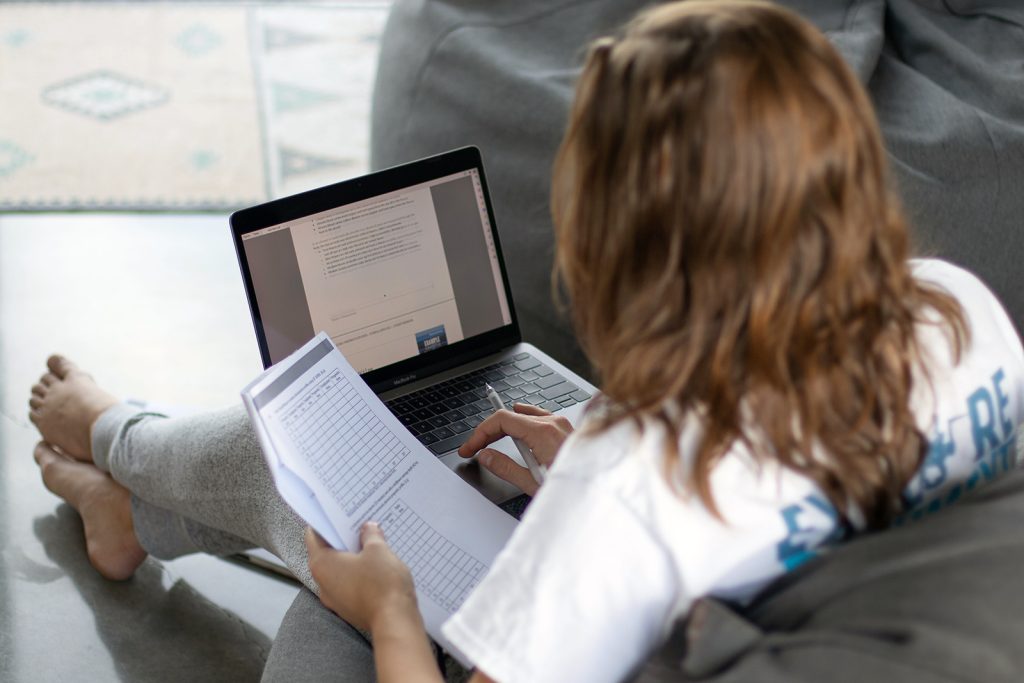
Practicing Ascents in Blue Water
Heading out with Dive Tutukaka, we arrived in South Harbour at the Poor Knights Island, dropping into 30 m/100 ft of water. Blessed with almost tropical blue visibility and surrounded by fish, I almost forgot we were on a course. Jamie’s bubble gun made an appearance, snapping me back into training. We eventually had an unfixable failure, and we called the dive and practiced holding our deco stops while managing our failures. We would ascend to 21 m/70 ft to stop and switch to our deco gas before holding deco stops every 3 m/10 ft until the surface. After completing four ascents holding our deco stops, we were given the thumbs up from Jamie to dive trimix the following day! Unfortunately, the weather had other plans.
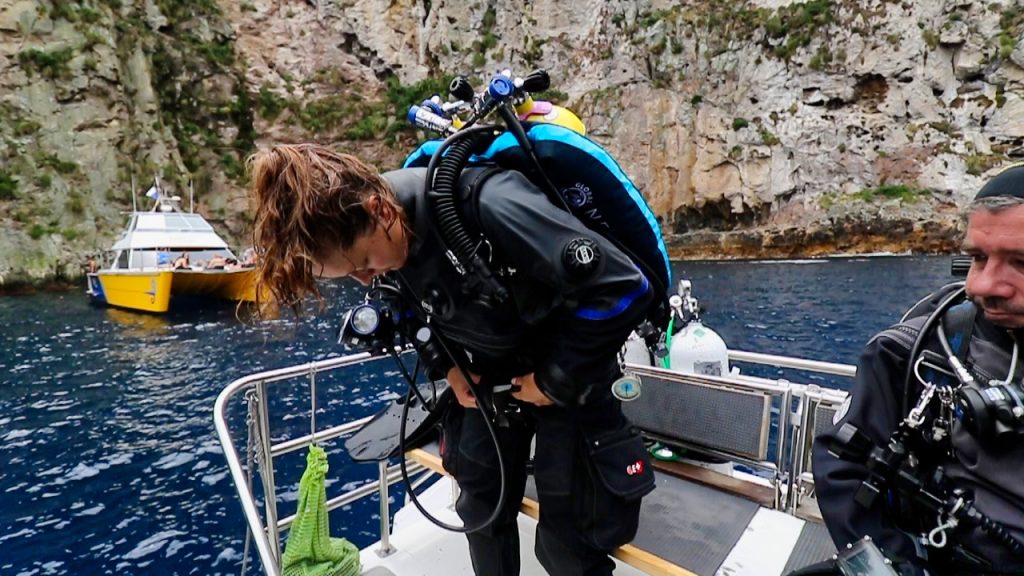
After planning our trimix dives and analyzing our gas, the trip was cancelled the following morning. In the weeks after, New Zealand went back into lockdown after the delta variant spread to the community. Auckland was in a strict lockdown from the rest of the country trying to slow the spread, meaning we couldn’t finish the course until the border between Northland and Auckland reopened.
During this time, my scholarship gear from Halcyon arrived and was delivered to my door! I felt like a kid at Christmas opening the parcel. Inside the box contained a beautifully designed NextGen Scholar wing and Halcyon regs to accompany it. I received a can light and essentials to prepare me for my Cave 1 course and a bright new SMB and reel. I was beyond stoked to put my new scholarship gear to use for my trimix dives!
Finally, in February this year, we were able to reschedule our last dives. We decided as a group we wanted to do another day of practicing ascents before we launched into our trimix dives. With the nod of approval after our dives, we continued to plan our dives for the following day. The weather was expected to get worse, everything was feeling far too familiar, and we were concerned that the dives might get cancelled again.
Putting Practice into Reality!
We arrived at the dive shop ready to go at 7:45 am, and we were stoked to see the boats were going out! Although it was a bumpy ride, we tucked into a dive site called Middle Arch for our first trimix dive. Josh and I decided I would do navigation based on my time working at the Poor Knights and he was going to run our deco.
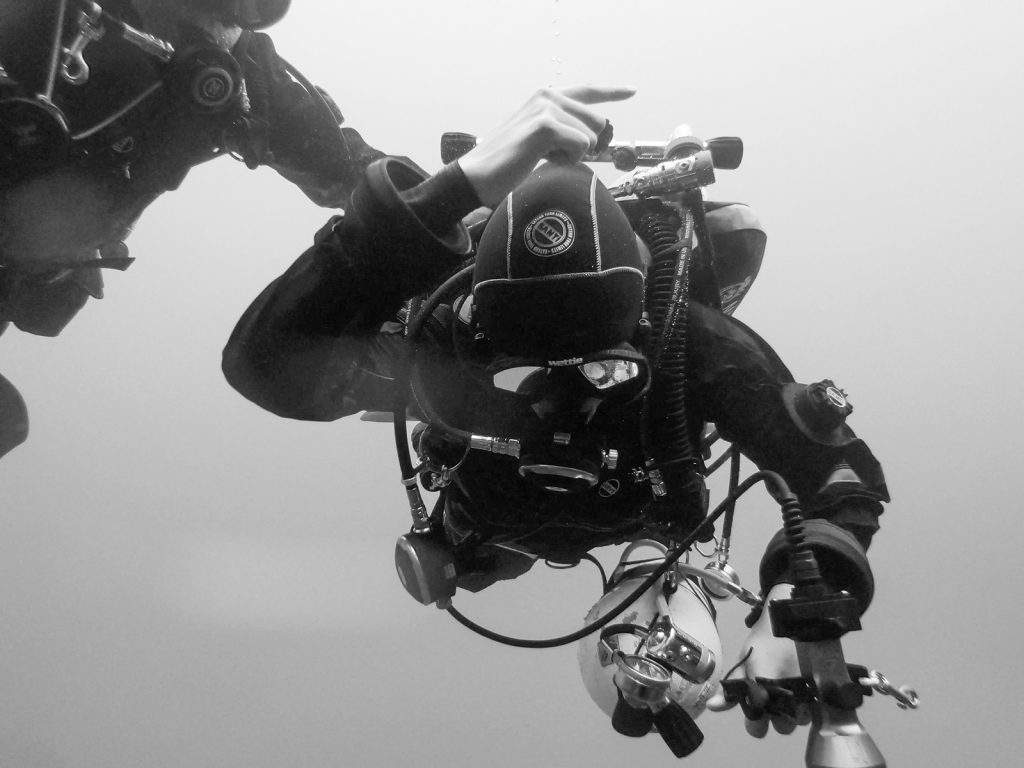
Over my five summers working on the dive boats at the Poor Knights, I had slowly ticked off all the dive sites around the Poor Knights above 30 m/100 ft. Finally, I was excited for my opportunity to explore somewhere new. There was a finger reef that projected southwest of Middle Arch that I had only seen from above. Now descending to 44 m/144 ft, I was able to see where this reef went! Immediately we were engulfed in schools of fish. Human-sized kingfish came up and checked us out. Sticking to our dive plan, our average depth was shallower than we had planned for, and as we started deco, we found that we hadn’t accumulated as much deco as we were planning for. Josh was doing deco in his head while I was comparing it to my dive computer. This was a great example for us to talk about after our dive as well as to plan our next dive with multiple options. Switching roles in our second dive, we were able to complete a 76 min dive with 30 mins of deco and a max depth of 45 m/148 ft.
As we returned to port, we were told that the boat was cancelled for the next week. Feeling so close, and disappointed that we couldn’t finish, we watched the weather closely and waited for our next chance. A couple of weeks later, all the stars aligned and we were able to head out for our last dive. We arrived at a dive site I had been to only a handful of times and what I knew as “Cleaner Fish Bay”. But what I didn’t know was that the dive site at 30 m/100 ft—called “Boarfish Reef”’—extended down to the sand at 50 m/164 ft. I was beyond excited about exploring a new site, knowing this was exactly the reason I was doing Tech 1.
I would be lying if I didn’t say I was a little nervous, but that soon disappeared as we got into the water. We made our way to 50 m/164 ft following the wall along. I couldn’t believe how light it was, how clear the water visibility was, and how large the sponges and encrusting life (including black coral!) on the reef. There were thousands of fish hovering above the reef, dancing into the light coming from my torch. We followed along the wall, averaging a depth of 47 m/154 ft and then started our ascent. Once we had switched onto our deco bottles, we continued our stops while following the wall back toward the boat. It was like diving two sites in one dive. This was my deepest dive to date, and I came up beaming! The best part was I felt so comfortable on the dive and during the deco stops that I couldn’t wait to do my next trimix dive.
Trimix Dives on Scooters
After the course was complete, the GUE NZ community had their monthly weekend dive at the Poor Knights. Wanting to put my new skills into action, I joined Jamie for a trimix dive on scooters, allowing us to find depth quickly and make the most of the time exploring on scooters before coming back along the wall for deco. I still can’t get over the life that can be found at 50 m/164 ft. We had kingfish joining us as if we had been accepted into their school. A curious bronze whaler shark also came in to say hello before swimming off into the blue. Stopping to take it all in, I looked up to see the most amazing wall dropping away to 70 m/230 ft and penetrating the surface above. Tech 1 has opened up a completely new world to what I already knew, and I’m so excited about all the opportunities ahead to explore more.

| Author’s Note: Thank you Global Underwater Explorers for supporting my training, giving me the ability to make this possible. Also thank you to my amazing sponsor Halcyon for my scholarship gear and for enabling me to spend more time underwater! A HUGE thank you to my instructor, Jamie Obern, for all your patience, ability to explain anything simply and believing in me. Thank you to Josh for being the best dive buddy and partner! And finally to Dive Tutukaka, there are no words to say how thankful I am for supporting my diving and me as a person. |
See Companion story: Preparing for GUE Tech 1 by Guy Shockey
Dive Deeper
InDepth: Returning To Diving After A Concussion by Annika Andresen
InDepth: Jumping into the Deep End by Annika Andresen (On taking GUE’s Rec 3)
InDepth: Meet GUE’s NextGen Scholarship Winner
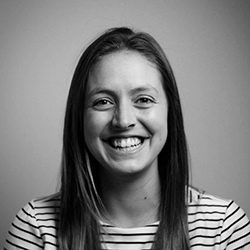
GUE’s first NEXTGen scholar, Annika Andresen was Head of Programmes for BLAKE NZ, connecting thousands of young Kiwis with their marine environment. Annika holds a Master of Architecture degree, where her thesis investigated the role architecture plays on the connection people have with their environment. During her studies, Annika worked as a dive instructor for Dive! Tutukaka, and was the President of the Auckland University Underwater Club. Annika has just been awarded the New Zealand Women of Influence Youth Award for 2019. Using her natural enthusiasm and infectious personality, Annika hopes to educate others to understand and cherish our unique environment and to better protect it for the years to come.





















































